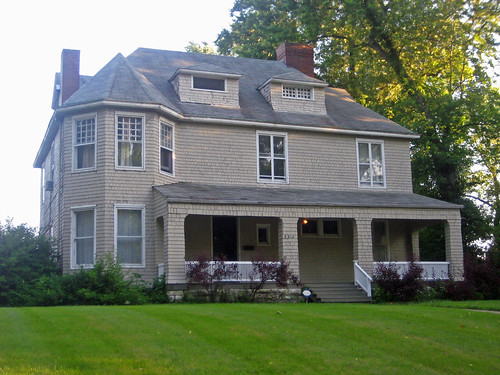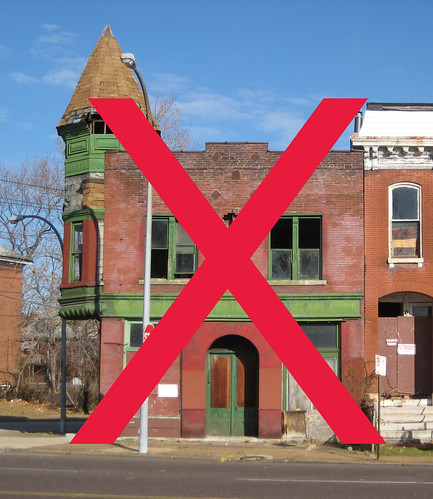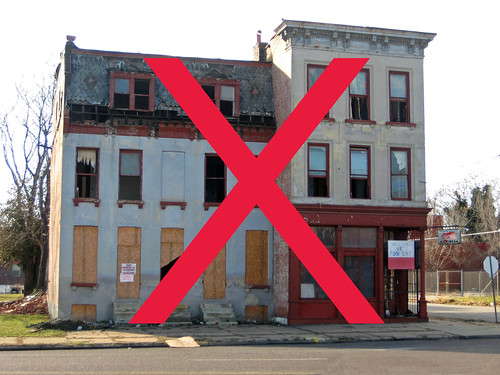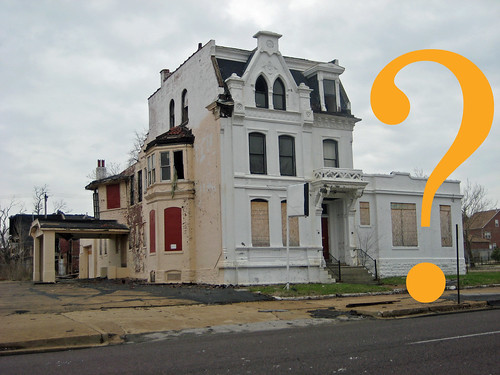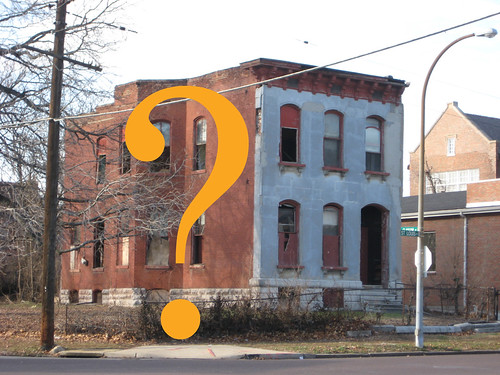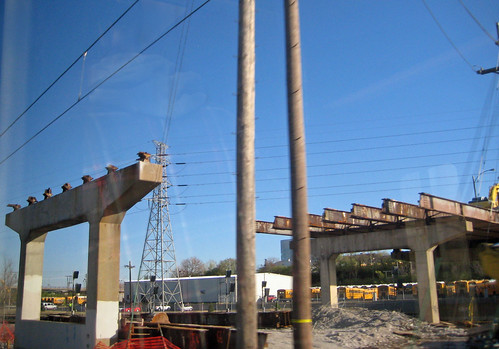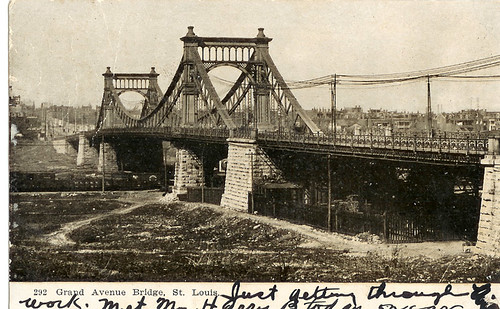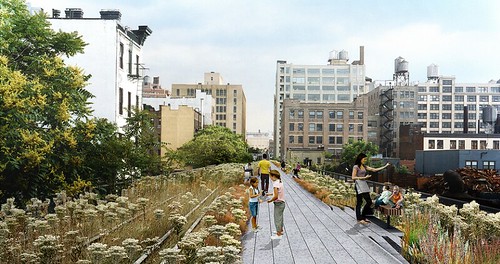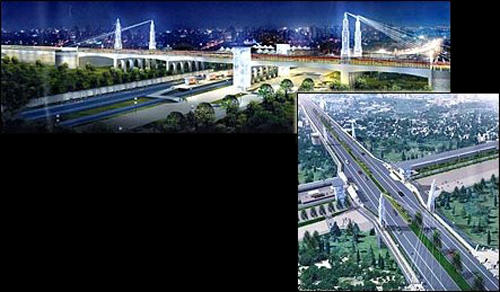 The West End neighborhood began to be developed in the late 1800's as a somewhat pastoral escape for both residents and institutions from the increasingly polluted industrialized areas of the City farther east. While still urban in plan with a grid of streets, upper middle class residences were built on larger lots and many blocks lacked alleys, with homes instead having individual driveways from the street. Cabanne Avenue runs the length of the neighborhood from Union to Hodiamont and is representative of the areas ups and downs over the years.
The West End neighborhood began to be developed in the late 1800's as a somewhat pastoral escape for both residents and institutions from the increasingly polluted industrialized areas of the City farther east. While still urban in plan with a grid of streets, upper middle class residences were built on larger lots and many blocks lacked alleys, with homes instead having individual driveways from the street. Cabanne Avenue runs the length of the neighborhood from Union to Hodiamont and is representative of the areas ups and downs over the years. One of the institutions that located in the West End was St. Philomena's Technical School, built in 1910 at the corner of Cabanne and Union, having formerly been located at Clark and Ewing in Midtown. The school operated until 1970, after which the building was briefly used as a nursing home and then a day care center before going vacant. By the early 1990's the building's roof of the east wing collapsed. Unfortunately I only snapped a few photos of this building, always meaning to stop back when I had a full roll of film to shoot. In late 1996 though as I drove north on Union to another destination I sensed something was missing. A glance to my left confirmed that the building was completely gone. The still vacant site is owned by the LRA.
One of the institutions that located in the West End was St. Philomena's Technical School, built in 1910 at the corner of Cabanne and Union, having formerly been located at Clark and Ewing in Midtown. The school operated until 1970, after which the building was briefly used as a nursing home and then a day care center before going vacant. By the early 1990's the building's roof of the east wing collapsed. Unfortunately I only snapped a few photos of this building, always meaning to stop back when I had a full roll of film to shoot. In late 1996 though as I drove north on Union to another destination I sensed something was missing. A glance to my left confirmed that the building was completely gone. The still vacant site is owned by the LRA. Across the street stands this vacant house at 5309 Cabanne. It had been proposed for demolition in August 2006 but the demolition was denied by the Preservation Board. Here is the full board agenda showing photos of a partial collapse of the rear wall. Almost three years, this fragile home is still vacant and in limbo.
Across the street stands this vacant house at 5309 Cabanne. It had been proposed for demolition in August 2006 but the demolition was denied by the Preservation Board. Here is the full board agenda showing photos of a partial collapse of the rear wall. Almost three years, this fragile home is still vacant and in limbo.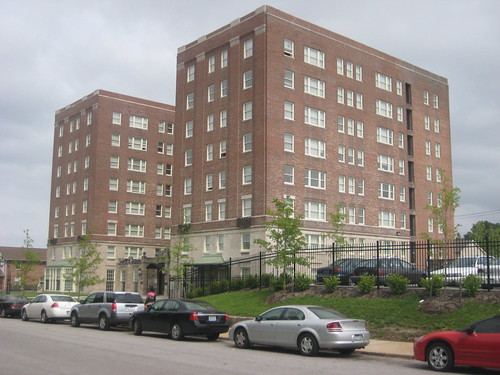 During the 1920's the large lots which once attracted residents wanting a large home began attracting developers of large apartment buildings. This gave opportunities to middle class St. Louisans to live in a relatively exclusive location. The Winston Churchill Apartments, one of the largest buildings in the neighborhood was built in 1927 at the northwest corner of Cabanne and Belt. The Winston Churchill recently underwent an extensive historic renovation after having become somewhat run down over the years.
During the 1920's the large lots which once attracted residents wanting a large home began attracting developers of large apartment buildings. This gave opportunities to middle class St. Louisans to live in a relatively exclusive location. The Winston Churchill Apartments, one of the largest buildings in the neighborhood was built in 1927 at the northwest corner of Cabanne and Belt. The Winston Churchill recently underwent an extensive historic renovation after having become somewhat run down over the years. A vintage photo of the Winston Churchill from the Globe Democrat
A vintage photo of the Winston Churchill from the Globe Democrat Collection at the Mercantile Library. Additional views here
Across Cabanne from the Winston Churchill was a majestic French Renaissance building whose elevation rivaled City Hall in scale. The Academy of the Visitation was designed by Barnett Haynes & Barnett and opened in 1892. Visitation had moved from the corner of 19th and Cass, just west of the Clemens Mansion. 70 years later in 1962, Visitation again moved west to their present location on Ballas Road near Highway 40. The building was sold for $378,267 to the City of St. Louis, who demolished it and created Visitation Park, now renamed Ivory Perry Park.

 Academy of the Visitation 1892-1962 - photo from the St. Louis CIN website
Academy of the Visitation 1892-1962 - photo from the St. Louis CIN websiteAfter World War 2, the west end began to experience decline with many of the large homes being divided into rooming houses and large apartments were divided into smaller units. When Pruitt Iago was emptied and finally imploded in 1972, many of its residents were relocated to the West End. Eventually many of the slumlords that owned the large apartment buildings simply abandoned their buildings instead of investing in needed maintenance. By the early 1990's many of these large abandoned apartment houses had deteriorated to the point where the roof, floors and interior had simply collapsed into the basement leaving an open masonry shell. Eventually, the hollow shells were demolished and new single family homes were beginning to be built on Cabanne and nearby streets. Further details of the neighborhood's history can be found here on the City's web site
 West of Belt on Cabanne, one such development is fittingly called "Maple Acres". The north side of the street has been built-out with cheap looking suburban styled houses, but the south side of the street is still acres of open prairie except for two surviving original homes.
West of Belt on Cabanne, one such development is fittingly called "Maple Acres". The north side of the street has been built-out with cheap looking suburban styled houses, but the south side of the street is still acres of open prairie except for two surviving original homes.
 West of Belt on Cabanne, one such development is fittingly called "Maple Acres". The north side of the street has been built-out with cheap looking suburban styled houses, but the south side of the street is still acres of open prairie except for two surviving original homes.
West of Belt on Cabanne, one such development is fittingly called "Maple Acres". The north side of the street has been built-out with cheap looking suburban styled houses, but the south side of the street is still acres of open prairie except for two surviving original homes.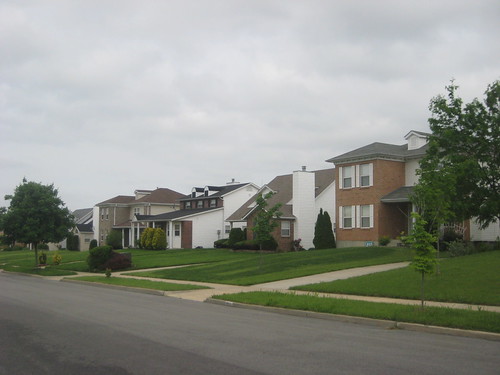 New houses on Cabanne in "Maple Acres"
New houses on Cabanne in "Maple Acres" One of the two surviving homes amid an urban prairie
One of the two surviving homes amid an urban prairie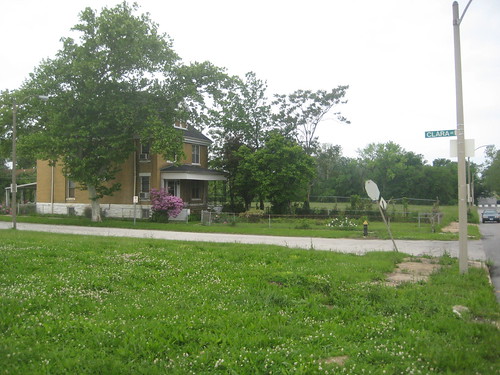 Just west of Clara is the other survivor
Just west of Clara is the other survivorFurther West at Cabanne and Goodfellow this large apartment at 5741 Cabanne building is undergoing a slow and seemingly needless demolition. The building was occupied and seemed to be kept in fairly decent condition. A few years ago there was a fire in the unit that is missing windows in the photo below, but damage did not seem wide-spread. A 2008 aerial photo on Geo St. Louis shows no signs of roof failure that would accelerate deterioration.

 Photo from an on line real estate web site that still shows the building for sale for $225,000
Photo from an on line real estate web site that still shows the building for sale for $225,000 Close-up of one of the building entrances
Close-up of one of the building entrances
When the West End was first developed, the area centering on Cabanne Avenue had a relatively unusual concentration (for St. Louis) of frame homes, specifically in the American Shingle Style. Located at the southwest corner of Cabanne and Goodfellow was the Henry S. Potter residence designed by H.H. Richardson and built in 1886. The rambling shingle style home had attached shingled stable and the grounds were surrounded by a decorative wrought iron fence with large shingled posts. The home like Visitation met its demise when it was sold to the City and demolished for yet another park.
 1942 photo from the Historic American Building Survey. Two additional photos here.
1942 photo from the Historic American Building Survey. Two additional photos here. Here is the Potter House site today. Even the iron fence,
Here is the Potter House site today. Even the iron fence, part of which had survived as of a decade ago is now gone.
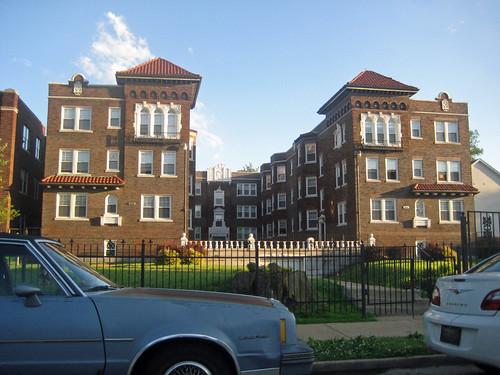 Just west of the park at 5832 Cabanne is another success story. This U-shaped multi-family building appeared vacant for several years and I feared it would meet the fate of so many other apartment houses, but several years ago it was completely renovated and is always immaculately kept.
Just west of the park at 5832 Cabanne is another success story. This U-shaped multi-family building appeared vacant for several years and I feared it would meet the fate of so many other apartment houses, but several years ago it was completely renovated and is always immaculately kept. Directly across the street at 5823 however is a six-family building that also had a fire a few years ago. The building is owned by Roberts Housing Investors, Inc. I am not sure if this is any relation to the Roberts Brothers. According to City records, the building has been vacant since at least 1991. It was condemned for demolition on 6.7.06, but three years later, it still stands. The aerial view below shows the dire condition of the building, which leads me to believe that it will not survive. A photo from before the fire can be seen here on Built St. Louis.
Directly across the street at 5823 however is a six-family building that also had a fire a few years ago. The building is owned by Roberts Housing Investors, Inc. I am not sure if this is any relation to the Roberts Brothers. According to City records, the building has been vacant since at least 1991. It was condemned for demolition on 6.7.06, but three years later, it still stands. The aerial view below shows the dire condition of the building, which leads me to believe that it will not survive. A photo from before the fire can be seen here on Built St. Louis.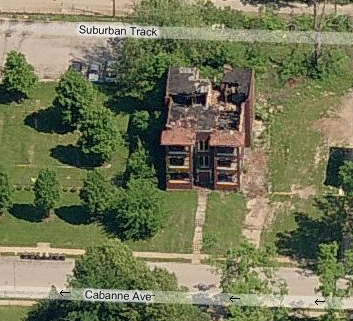 Aerial view of 5823 Cabanne. The label "Suburban Track" refers to the former Hodiamont street car right-of-way which is still owned by Metro
Aerial view of 5823 Cabanne. The label "Suburban Track" refers to the former Hodiamont street car right-of-way which is still owned by MetroWest of Hamilton, Cabanne Avenue ends with the West Cabanne Place, a private place established in 1888. As one of the farthest reaching platted subdivisions at that time, West Cabanne is purposely toned down compared to the extravagant private streets of the Central West End. The street has several large but unpretentious Shingle Style residences and attracted several architects who built their homes there in this style, which has been called one of the few truly American styles of architecture. The street became a National Register Historic District in 1980, but unfortunately three of the Shingle Style homes have been lost.
This restored Victorian located at 5927 West Cabanne place was threatened until 2003 after being vacant for at least 15 years. The home was listed on Landmarks 11 Most Endangered list from 1997 until 2002. Renovation began the following year. Click here for a "before" photo and history of the home.


